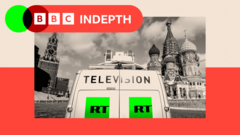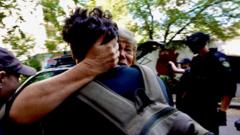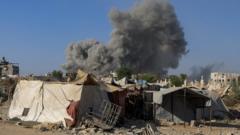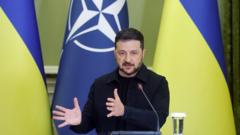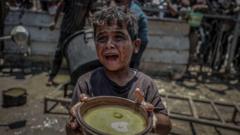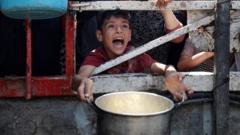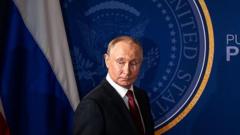Amid Russia's portrayal of Mariupol as a recovering city, residents share a starkly different reality, marked by severe hardships, misinformation in schools, and a silent but persistent resistance against occupation.
"Life in Mariupol: A Struggle Between Reality and Propaganda"
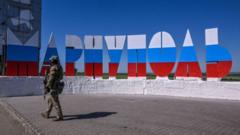
"Life in Mariupol: A Struggle Between Reality and Propaganda"
Residents of Mariupol challenge Russian narratives of recovery, revealing ongoing struggles and resistance in the occupied city.
Ukrainian residents of Mariupol have expressed deep skepticism regarding the rosy picture presented by Russian media about the city, which has been under occupation for over three years following a brutal siege. John, an anonymous resident, voices this discontent, stating, “What they're showing on Russian TV are fairy tales for fools. Most of Mariupol still lies in ruins.” He highlights that while repairs may be visible on main streets for the cameras, many neighborhoods remain abandoned and devastated.
The UN previously estimated that around 90% of the residential structure in Mariupol suffered damage during the conflict. Contrary to Russian claims of reconstruction, residents describe a city where many still live in dilapidated conditions. Olha Onyshko, who fled Mariupol last year, asserts that only selective structures have been repaired, leaving much of the debris – including the remains of victims – unaddressed.
Residents are also contending with severe water shortages, as one local described the water quality as resembling "coca cola." Serhii Orlov, a deputy mayor in exile, explains that only one reservoir is supplying water, which has not met drinking standards for an extended period.
Power outages, expensive food, and a lack of essential medicines add to the population's woes. James, a resident, mentions that basic medical supplies are scarce, placing significant strain on those with chronic illnesses.
The education system under Russian rules also reflects propaganda efforts, with children being taught distorted narratives about the ongoing conflict and territory claims that include various Ukrainian regions. Students are subjected to lessons promoting the idea of a "liberation" from Nazis, and teachers who resist this dogma face intimidation.
Despite these challenges, a resistance movement continues to function discreetly within Mariupol. Residents have been seen secretly painting Ukrainian colors and distributing messages of hope. James, who is part of this underground network, shares that their efforts involve gathering intelligence for Ukrainian forces and occasionally sabotaging Russian military operations.
As these residents navigate life under occupation, they face daily threats and surveillance, revealing a tense atmosphere filled with distrust. John encapsulates the sentiment among many, expressing that they do not seek peace at the expense of their territory but yearn for genuine liberation.
This ongoing struggle reflects broader sentiments among Ukrainians fighting against occupation and highlights their resilience amid adversity, underlining a dissonance between Russian propaganda and the lived experiences of those in Mariupol.


